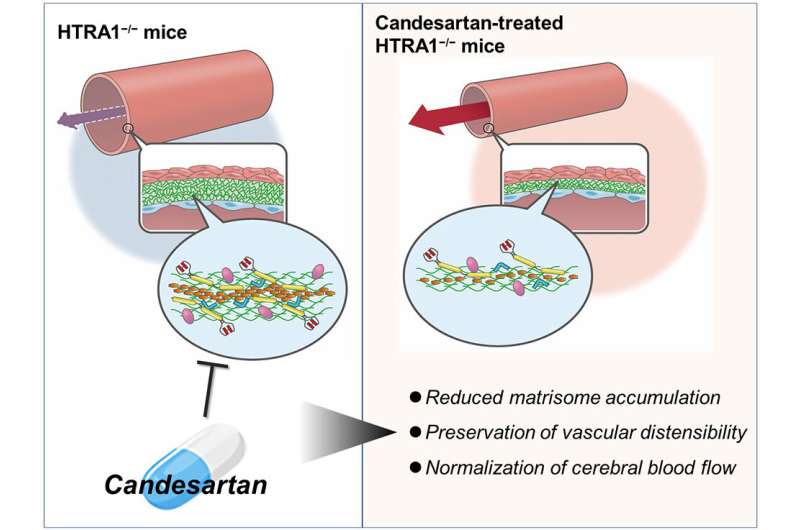
Our brains have small arteries that perform a unique function. Aging and high blood pressure can damage these arteries, leading to gait disturbances and dementia. This disease is known as cerebral small vessel disease (CSVD). It is also known to be highly associated with Alzheimer’s disease. CSVD is highly prevalent in the elderly, even with the widespread use of antihypertensive drugs. Therefore, in an aging society, there is an urgent need to elucidate the molecular pathogenesis of age-related CSVD and develop therapeutic methods.
CARASIL (Cerebral autosomal-recessive arteriopathy with subcortical infarcts and leukoencephalopathy) is a hereditary form of CSVD, which is caused by dysfunction of HTRA1 (High Temperature Requirement A Serine Peptidase 1). It was initially reported as a recessive hereditary disease, but in recent years, dominant traits have been reported in many cases. HTRA1 is also attracting attention as a risk gene for age-related CSVD. A recent report suggests that 1 in 450 people in the UK carry the risk mutation. In CARASIL arteriopathy, thickening of the intima is observed, and the changes resemble age-related CSVD. Therefore, researchers at Niigata University thought that the study of the pathogenesis of CARASIL would also lead to the study of the pathogenesis of age-related CSVD and proceeded with their research.
Researchers at Niigata University and RIKEN found that a group of proteins called matrisomes, which consist of extracellular matrix (ECM) and ECM-binding proteins, accumulated in the cerebral arteries of aged HTRA1 gene-knockout mice. As a result, 40% of the accumulated proteins were composed of matrisome proteins. The matrisome proteins were also found to accumulate in the inner membrane of CARASIL patients. The accumulation of matrisome proteins increased significantly with age. In addition, cerebral blood vessels became stiffer, and cerebral blood flow was reduced in HTRA1-deficient mice. The accumulated matrisome proteins included fibronectin, a central component of the matrisome and a known substrate of HTRA1.
“This change in CARASIL may be related to the inadequate degradation of matrisomes due to HTRA1 dysfunction and the increase in matrisomes due to aging” says Prof. Osamu Onodera, director of the Niigata University Brain Research Institute.
Next, the Niigata University and RIKEN researchers examined the effects of the antihypertensive drug candesartan cilexetil, which has been reported to inhibit the accumulation of fibronectin in other organs. The results showed that candesartan treatment reduced matrisomal protein accumulation and normalized vascular stiffness and cerebral blood flow regardless of its antihypertensive effect.
“What we saw was remarkable. Even when HTRA1 was completely absent, 61% of the accumulated matrisomal proteins were suppressed. This effect is not accompanied by an increase in degrading enzymes or suppression of matrisome protein expression. We think it is important to clarify this mechanism in the future,” says Dr. Taisuke Kato, an associate professor in the research team.
Source: Read Full Article
